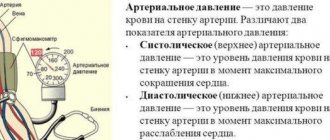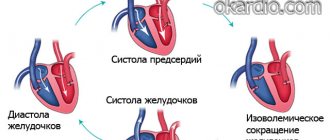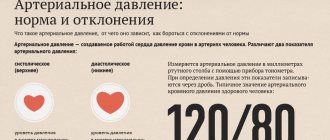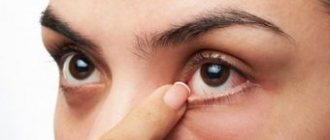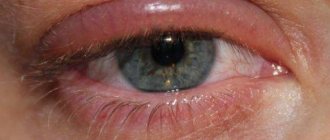4.7 / 5 ( 15 votes)
In medical practice, it is not so common to encounter a decrease in lower pressure while the upper pressure remains within normal limits. But still, cases do occur and require detailed consideration, our website offers you an interview, lower low blood pressure, cardiologist Ivan Ilyich Batalov answers questions about the pathologies of low blood pressure, the causes of its occurrence and ways to combat the disease.
Interview with a cardiologist.
What is blood pressure
— Ivan Ilyich, what is blood pressure?
— Blood pressure is the resistance of the walls of blood vessels to blood flow and one of the main indicators of the health of the whole organism. Deviations from normal values may indicate pathologies of the body as a whole.
— When measuring pressure on a tonometer, we see two indicators, what do they mean?
— The pressure indicator consists of two numbers or two pressures, upper (systolic) and lower (diastolic):
- upper - the pressure of the blood flow during the contraction of the heart muscle or the force with which the heart pushes blood into the arteries;
- the lower one is the pressure of the blood flow during the period of relaxation of the heart muscle.
— How is pressure measured?
— In millimeters of mercury (mmHg). If the blood pressure readings are 120/80, respectively, the upper systolic is 120, and the lower diastolic is 80 mm Hg.
— Is low blood pressure hypertension or hypotension?
— Hypertension is high blood pressure, and by hypotension medicine means a decrease in blood pressure
— Ivan Ilyich, if the pressure is low, are the vessels dilated or narrowed?
- With low pressure, the vessels are dilated, resulting in a lack of tone and, as a result, poor blood circulation and a decrease in blood pressure.
Normal blood pressure readings
— What blood pressure values can be considered normal?
— Normal blood pressure readings are only approximate, since pressure fluctuations occur constantly under the influence of the individual characteristics of the body and certain factors.
— What influences the indicators?
— Blood flow speed or pressure readings may increase during pregnancy, and physical activity also affects blood pressure. That is, pressure readings in these cases will be several units higher than that of a person at rest.
I will give a comparison table with normal blood pressure values, according to WHO standards.
Table No. 1. Blood pressure readings are within normal limits:
| Age category | Upper (systolic) blood pressure | Lower (diastolic) blood pressure |
| From 14 to 18 | 130 | 80 |
| From 18 to 35 | 120-130 | 80-85 |
| From 40 to 49 | 130-135 | 85-90 |
| Over 50 | 140 | 90 |
| Pregnancy period | 110-130 | 75-85 |
- Also, you can calculate a more accurate pressure indicator depending on age and weight using the formula.
- Upper blood pressure, systolic = (0.1 * weight in kg) + (0.5 * number of completed years) + 109
- Lower blood pressure, diastolic = (0.1*number of completed years) + (0.15*per weight in kg) +63
- Example, for an age of 30 years and a weight of 80 kg.
- Upper, systolic = (0.1*80)+(0.5*30)+109=8+15+109=132
- Lower, systolic=(0.1*30)+(0.15*80)+63=3+12+63=78
In the photo there is a tonometer - a device for measuring blood pressure.
— What pressure is considered critically low?
— Again, it is impossible to say an exact figure; it all depends on what pressure is acceptable for a particular person. But, as a rule, a person’s lowest blood pressure can become critical when it deviates by 60 units. And this applies not only to the lower indicator, but to the upper systolic, in both directions.
Is it possible to independently raise the lower pressure to normal levels?
It makes sense to try if both indicators: diastolic and systolic are low. Otherwise, it is not recommended to take risks.
The best option would be to adopt a horizontal position, lie quietly, breathe evenly and move less.
The following is the algorithm:
- Take one tonic tablet. Aspirin or Citramon will help.
- Drink a tonic drink, coffee or tea, one cup.
- Eat something salty, such as cucumber.
Contrast showers, baths and the like are not recommended. There will most likely be no consequences, but no effect either.
If there is no increase in indicators within 20 minutes, this is grounds for calling an ambulance.
Doctors will provide the necessary assistance on site and, most likely, will offer hospitalization in a specialized hospital for examination in specialized conditions.
To agree or not is the patient’s choice. If this is not possible, you should make an appointment with a cardiologist and, at the first convenient opportunity, visit a specialist to prescribe a course of treatment.
Stopping an attack is not enough.
Reasons for decreased diastolic pressure
Usually, there is a simultaneous decrease in two pressure indicators - upper and lower, this condition is called hypotension. But in rare cases, only the diastolic pressure decreases, while the upper systolic pressure remains within normal limits.
— What are the reasons for the decline in performance? And if the lower pressure is low, what is it?
- If the second pressure is low, this can be caused by two groups of reasons - physiological and pathological. Physiological ones include the negative influence of certain factors (fatigue, nutrition), while pathological ones include disruptions in the functioning of internal organs. And all these reasons need to be considered in more detail, since without eliminating them it is impossible to bring blood pressure levels back to normal.
Hormonal disorders
A low second pressure reading may indicate hormonal fluctuations. This cause is more common in women during pregnancy and at the time of puberty. During pregnancy, the body actively produces the hormone progesterone, which is important for the development of the baby.
- Ivan Ilyich, but pregnant women most often experience high blood pressure.
- Yes, in 80% of pregnant women there is an increase in indicators, but the likelihood of a decrease in blood pressure is also high. The following factors increase the risk of hypotension during pregnancy:
- minimum content of proteins and carbohydrates in food;
- severe toxicosis in the first trimester greatly reduces blood pressure;
- frequent emotional stress and chronic stress;
- multiple pregnancy.
Hormonal imbalance.
— After the birth of the child, does the mother’s condition stabilize and blood pressure levels return to normal?
— Not always, the condition may persist because during breastfeeding, the synthesis of prolactin, a hormone that ensures lactation, begins and the nursing mother’s blood pressure may remain low.
During puberty, girls also experience hormonal fluctuations and a stable decrease in blood pressure.
Chronic fatigue syndrome
Low blood pressure can be observed against the background of chronic fatigue and overwork.
Overfatigue syndrome is observed against the background of constant and prolonged fatigue of the body, which can be influenced by many reasons:
- mental stress at work or school;
- a minimum amount of rest when the body does not have enough time to recover;
- psycho-emotional stress due to stressful situations;
- increased physical activity;
- the use of certain groups of drugs that cause this condition.
Chronic fatigue disrupts the functioning of the entire body.
— What drugs can cause chronic fatigue?
— Medicines acting on the central nervous system and antihistamines.
As you can see from the list, fatigue can be physical and mental. The physical develops gradually, starting with fatigue and increasing with muscle pain and body aches. Mental fatigue has a different origin and begins with lethargy, fatigue and ends with weakness.
Chronic fatigue is a dangerous condition of the body that can lead not only to low blood pressure, but also to other serious diseases. When the first signs appear, you need to listen to your body and give it time to recover.
— Ivan Ilyich, what are the symptoms of chronic fatigue?
— Symptoms of overwork:
- Sleep disturbance.
- Paleness of the skin.
- Nausea and vomiting.
- Headache.
- Redness of the sclera of the eyes.
- Muscle pain.
- Violation of the psycho-emotional state (irritability, tearfulness, sudden changes in mood).
- Loss of appetite.
For people who, due to work or study, are prone to overwork and fluctuations in blood pressure, you need to understand that the main thing is rest and health, low blood pressure will be restored to normal limits if you listen to your body and give it relief.
Unhealthy sleep
For the health of the entire body, a person needs healthy sleep of at least 8 hours per day. Even if a person sleeps at least as much as required per day, sleep may not be complete.
- What does it mean?
— 70% of people experience insomnia, problems falling asleep, waking up during sleep, low blood pressure occurs precisely for these reasons. And these reasons are not always pathology; most likely, these are the consequences of mental and physical overstrain, stressful situations.
Sleep disturbance causes a decrease in blood pressure.
- Ivan Ilyich, how to deal with this?
— If sleep problems are not chronic, we can advise:
- accustom the body to a constant schedule, where going to bed will be no later than 23 hours;
- do not watch TV before going to bed and do not irritate the body with loud sounds, at least two hours before bedtime;
- Herbal tea based on linden blossom and honey or a glass of warm milk will help to relax the body in the evening;
- Pay attention to the pillow, it may not be comfortable.
All these tips, as I already said, are for people with temporary sleep disorders. If this problem is chronic, consultation with a specialist is necessary.
Diets
Overweight has recently become a pressing problem not only for the fairer sex, but also for men. People who are overweight are constantly on diets.
As a rule, most of them have a limited and monotonous range of products with a lack of nutrients. After a meal of this nature, the body experiences a deficiency of fats, carbohydrates and proteins, which threatens not only a decrease in blood pressure, but also more serious health problems.
— What should those who want to lose kilos do?
— Drawing up a diet with a calorie content of up to 1800 kcal, which should contain the optimal amount of all nutrients, and even better, consult with an endocrinologist, who, after studying the tests, will select the necessary nutrition.
Pathological causes of low blood pressure
— Ivan Ilyich, what is considered to be the pathological causes of low blood pressure?
— Pressure surges to a lesser extent can be caused by chronic diseases and pathologies of internal organs. And if all physiological causes are excluded, and a chronic decrease in blood pressure is observed, a full examination of the body is necessary to identify diseases and pathologies.
— What disease can cause chronic hypotension?
— More precisely, this is not one disease, but a whole list of pathologies:
- oncology;
- anemia;
- heart attacks and strokes;
- stomach ulcers;
- infectious diseases;
- kidney pathologies;
- osteochondrosis.
Oncology and low blood pressure
If blood pressure is low during cancer, this means that the body cannot cope with the load and all internal organs are insufficiently supplied with oxygen and nutrients. With a sharp decrease in blood pressure, the patient’s general condition sharply worsens, and he is overcome by weakness, dizziness and fatigue. In the presence of metastases, the pressure is critically low, which requires immediate hospitalization, otherwise there may be death.
— What puts such a high burden on the body during cancer and lowers blood pressure?
With cancer, blood pressure can drop to critical levels.
— I will provide a table with a detailed description of the reasons and their characteristics.
Table No. 2. Reasons that cause a drop in blood pressure in cancer:
| Reasons causing a decrease in blood pressure | Description |
| Intoxication | With oncology, tissue decomposes, causing toxins to enter the blood. For this reason, the composition of the blood changes and toxins are distributed throughout the body, resulting in poisoning. |
| Oxygen starvation | As a result of changes in the composition of the blood, an increase in the oncological tumor and compression of the vascular tissue, a minimal amount of oxygen and nutrients reaches the heart. Accordingly, the intensity of contractions of the heart muscle decreases, causing a decrease in blood pressure. |
| Dehydration | Against the background of oncological therapy and cancer symptoms, dehydration develops, which is characterized by vomiting and diarrhea. |
| Bleeding of internal organs | Cancerous tumors lead to the destruction of tissues and internal organs, which is fraught with internal bleeding, leading to a decrease in blood pressure. |
| Drug therapy | During oncology treatment with specific drugs, they have a severe effect on the body, lowering blood pressure. |
| Infections | The first thing that suffers in cancer is the immune system. The body becomes vulnerable to various kinds of infectious diseases that deplete the body, therefore blood pressure decreases. |
Anemia and low blood pressure
Anemia is a disease in which there is a deficiency of blood particles. Namely, they are responsible for the transfer of oxygen and, if there are too few of them, gas exchange is disturbed. Anemia and low hemoglobin causes a decrease in blood pressure.
— Ivan Ilyich, what is hemoglobin and what is considered normal?
— Hemoglobin in blood cells is produced by the bone marrow; this process, depending on the characteristics of the organism, lasts from 90 to 120 days. When its quantity is insufficient, a hormone, erythropoietin, begins to be produced, which stimulates the formation of blood cells. Hemoglobin is calculated per unit of blood, liter.
Table No. 3. Normal hemoglobin levels in the blood:
| Gender or body characteristics | Norm gram/liter |
| Woman | From 120 to 150 |
| Man | From 130 to 160 |
| Woman during pregnancy | Not lower than 110 |
— Ivan Ilyich, how to recognize anemia?
— Symptoms of anemia:
- pallor of the skin and mucous membranes;
- fast fatiguability;
- chills and constant feeling of cold (the patient freezes in any weather);
- increased drowsiness;
- feeling of needles on the skin of the extremities;
- irritability and apathy;
- stomatitis.
— For what reason does anemia occur?
- It can be:
- genetic diseases;
- deficiency of useful elements in the body caused by poor nutrition or diets;
- large blood losses due to injuries;
- pathologies of internal organs (liver and kidneys, tumors and gastrointestinal diseases);
- infectious damage to the body;
- taking certain groups of medications.
Anemia is a pathology with a low level of blood cells.
— What is the pressure with low hemoglobin?
- It is impossible to say the exact figure, it all depends on the state of the body at the moment, but the pressure changes in proportion to the level of hemoglobin, the higher it is, the higher the pressure, respectively, as its blood pressure decreases, the blood pressure also decreases.
I would also like to note the relationship between cholesterol and blood pressure. These indicators are inextricably linked and the indicator “high cholesterol and low blood pressure” does not occur; with an increase in one, the other also increases.
- What does this have to do with?
— Cholesterol is an atherosclerotic change in blood vessels, and therefore a cardiovascular background for the development of various myocardial pathologies.
Heart attack and low blood pressure
— What is low blood pressure in a person who has had a myocardial infarction and why does this happen?
— The main reason for a sharp decrease in blood pressure in the post-infarction period is impaired blood flow due to narrowing of the coronary arteries and blood vessels, as well as loss of elasticity of their walls. Therefore, low blood pressure during this period is common. Low blood pressure results in the following clinical picture:
- Weather dependence - deterioration in health when the weather changes (snow, rain, changes in atmospheric pressure).
- Constant weakness and impotence, when walking the patient staggers from side to side.
- When you suddenly stand up or change your body position, you feel dizzy, even to the point of fainting.
- A decrease in vascular tone causes unpleasant sensations behind the sternum, as they say, the heart squeezes or pinches the heart.
- Due to the lack of oxygen, you want to sleep throughout the day and are overcome by yawning.
But we must remember that such symptoms should not last a long time and they must be treated immediately. The consequences for the body with regularly reduced blood pressure levels are repeated myocardial infarction.
Stomach ulcer and low blood pressure
— What is the reason for the decrease in pressure in stomach ulcers and is it dangerous?
- Yes, it’s very dangerous. Low blood pressure in this disease occurs due to internal bleeding. This symptom is secondary and caused by the underlying disease. As a rule, a decrease in blood pressure against this background is accompanied by bradycardia or a decrease in heart rate.
— What other accompanying symptoms appear?
Pain in the stomach and frequent heartburn are symptoms of an ulcer.
— The clinical picture is as follows:
- cold and sweaty palms;
- pain in the temporal region can be of a different nature, but more often it is pressing, as patients describe - pressing on the temples;
- irritability;
- large blood loss causes a sharp drop in blood pressure and loss of consciousness follows;
- peptic ulcer with bleeding causes iron deficiency in the body, which entails symptoms of anemia (drowsiness, pathological changes in taste preferences, olfactory disturbances).
Blood pressure disorders and general condition are normalized only after treatment of the underlying disease.
Infectious diseases and low blood pressure
Infectious diseases are always accompanied by an increase in temperature, which can reach high levels. Accordingly, the body’s heat exchange is disrupted and dehydration develops. Not only the immune system is involved in the heat exchange process, but also the vascular system, and malfunctions in its functioning can be accompanied by a decrease in blood pressure.
— What temperature indicator accompanies infectious diseases?
— Both a temperature of 37 and a temperature of 39 indicate the presence of infection in the body. Its specific indicator depends on the type of virus or bacteria.
— What are the symptoms of low blood pressure and high temperature?
With a viral or bacterial infection, high temperature and low blood pressure may accompany:
- weakness;
- thirst and dry mouth;
- nausea and vomiting;
- loose stools (more often with bacterial pathogens).
— Should blood pressure be treated with medication as a symptom of a viral or bacterial infection?
— In case of minor deviations from the norm, it should not be subjected to drug therapy; the emphasis should be on treating the underlying disease. If there is a significant decrease in indicators, the cause may be another pathology and a doctor’s consultation is necessary.
A bacterial infection causes an increase in temperature and surges in blood pressure.
— Ivan Ilyich, if there is a low temperature and low pressure, what does this mean?
— If the upper pressure is low and the diastolic readings are underestimated, in combination with a low temperature, this is a violation of heat exchange, against the background of a malfunction of the cardiovascular and endocrine systems.
— Lower low pressure, what does this mean along with a decrease in temperature?
— I will say that only a 20% drop in temperature and pressure is worth sounding the alarm, because temperature fluctuations can occur during the day and this is not a pathology.
With a strong decrease in performance and over a long period of time, this can be caused by:
- endocrine diseases;
- diabetes mellitus;
- pregnancy;
- kidney pathologies;
- neurological disorders;
- heart failure.
Kidney disease and low blood pressure
Kidney pathologies are the cause of pressure surges both up and down.
— How are kidney diseases related to blood pressure?
— Directly, since the kidneys are the body’s filter, which removes toxins, breakdown products and excess fluid from the body. If all waste is not removed from the body in a timely manner, it enters the bloodstream, which causes blood pressure to spike.
Any renal pathology is directly related to blood pressure, since it begins the production of substances that increase blood pressure (pressor) or lower blood pressure (depressor). Blood flow in the kidney slows down and specific symptoms are provoked - discomfort and swelling.
Lower and upper low blood pressure in kidney diseases is very rare, although medicine is familiar with this pathology, an increase in blood pressure is more often observed.
— What pathologies cause an increase in indicators?
— These are congenital pathologies that cause enlargement of the walls of the arteries of the kidney, arterial aneurysms, atherosclerosis and many others.
— What kidney pathologies can cause a decrease in blood pressure?
— These are infectious diseases of the kidneys, pyelonephritis, or rather complications. These diseases can be treated without problems, but in some cases there may be complications:
- A kidney abscess is accompanied by chills and a temperature of 38, pain in the abdomen and discomfort when urinating. And as I already said, temperature can cause low blood pressure.
- Blood poisoning, or sepsis, is a fatal complication of kidney infection. It occurs against the background of the penetration of bacteria from the kidneys into the bloodstream. The clinical picture is rapid heartbeat and low blood pressure, increased temperature, sweating.
Osteochondrosis and low blood pressure
Osteochondrosis of the cervical spine is the cause of pressure surges. The disease is widespread at the age of 20 and has the following pathogenesis: on both sides of the spinal column there are arteries that supply food to the brain, which regulates blood pressure, and when compressed, oxygen starvation begins, as a result, blood pressure goes beyond normal limits. With this diagnosis, low blood pressure cannot be present all the time; rather, it often rises periodically, followed by low blood pressure.
This pathology (jumps in blood pressure) with osteochondrosis is called “vertebral artery syndrome” in medicine. Pressure changes in this pathology are accompanied by nausea and vomiting, headache and fainting.
Osteochondrosis of the cervical spine disrupts the nutrition of the brain.
— Ivan Ilyich, does osteochondrosis of the lumbar and thoracic region also cause surges in blood pressure?
— No, the vessels supplying the brain in these diseases are not subject to compression, which means there are no surges in blood pressure.
Pathological factors
Low diastolic pressure develops for a whole group of reasons. Let's briefly outline them:
- Long-term, often uncontrolled or insufficiently thought-out use of antihypertensive drugs. The patient himself and his attending physician are to blame (medical errors are possible, especially if there was a short period of observation in the absence of correction of the therapeutic regimen).
- Severe intoxication of the patient's body. Often as a result of infectious diseases.
There is a direct correlation between the degree of hypotension and the nature of intoxication. The most difficult situation is the course of chronic infectious diseases such as tuberculosis.
The viral origin of the disease also plays a role, for example, in AIDS and other pathologies.
The reason lies in the irritation of special brain centers by waste products of infectious agents.
- Deficiency of several hormones in the body. A major role in the regulation of blood pressure is played by cortisol (substance of the adrenal cortex), T3, T4 (thyroid hormones), TSH, corticotropin (specific active elements of pituitary origin).
Also, partly, the hormone vasopressin. The list of possible organ diseases is very wide. Changes can also develop as a result of injuries and tumor processes.
- Another reason for low lower pressure is a lack of hemoglobin. In other words, anemia of various etiologies. Most often associated with insufficient iron in the blood.
In addition to low blood pressure, other symptoms are possible and even probable, such as perversion of taste preferences (a person may well eat chalk and inedible things), disorders of regenerative processes, etc. It's hard to miss a problem like this.
- Inflammatory processes in organs and tissues of a local and generalized nature.
- Avitaminosis, hypovitaminosis of various etiologies.
- Neoplastic processes in the body. Malignant tumors are always accompanied by severe hypotension, including isolated hypotension, of the diastolic type.
- Renal dysfunction. Including all kinds of nephropathies. Glomurulonephritis, pyelonephritis, nephritis, etc. Accompanied by a violation of the synthesis of prehormone-renin, which has a pronounced regulatory ability.
- Shock. Including anaphylactic. Associated with a drop in blood pressure to critical levels. An emergency condition that requires immediate medical attention.
- Stressful situations with ongoing processes of autonomic dysfunction.
- Bleeding. Including gynecological and gastroenterological. They lead to anemia, which is associated with a decrease in blood pressure.
It is necessary to determine the etiology of the process in order to prescribe adequate treatment. The causes of low diastolic pressure can be any. You can't figure it out on your own.
Symptoms of low blood pressure
— Ivan Ilyich, how do symptoms accompany high blood pressure?
— Symptoms depend on the reasons for the decrease in blood pressure, which we have already discussed. But it is still possible to identify a certain clinical picture that accompanies this pathology. The sensations at low pressure will be as follows:
- General weakness, which can occur for no apparent reason.
- Absent-mindedness.
- An unstable psycho-emotional state, which is expressed in apathy and sudden changes in mood.
- Against the background of low blood pressure, nausea and vomiting may occur.
- Dizziness, especially when changing body position from sitting to standing.
- With active physical activity - arrhythmia and shortness of breath (difficulty breathing).
- Poor quality of sleep and difficult morning awakening.
- Increased sweating.
If you identify one or more symptoms from the list, you need to check your blood pressure. This can be done using a tonometer at home.
A decrease in one or two indicators at once is a reason to seek advice from a hospital, where the doctor will prescribe an examination to identify the causes of low blood pressure. Therefore, just as a decrease in blood pressure is not always a separate pathology, in most cases it is a symptom of serious diseases.
— Ivan Ilyich, a little more about the symptoms, maybe nosebleeds with low blood pressure?
- Blood from the nose, low pressure - this is not a typical symptom and is rare; rather, it is characteristic of high blood pressure levels. Since the nasal mucosa consists of many small and thin vessels, with increased blood flow they burst. In the case of low scores, this may indicate additional pathology:
- anemia;
- atherosclerosis;
- violation of the permeability of vascular walls;
- diseases of the ENT organs;
- nasal septum defects.
Pain in the sternum is not a typical symptom of low blood pressure.
There are several physiological reasons, such as weather dependence and sudden changes in position (a person unbends after a long stay in a bent state, while the blood flow cannot be redistributed in time and nosebleeds occur).
— Is pain in the heart with low blood pressure a characteristic symptom?
— Chest pain is not a typical symptom, but can occur with vegetative-vascular dystonia. As a rule, the nature of pain differs from pain associated with heart disease. This is not a burning sensation in the heart area, but a dull sensation that does not affect the left limb and the scapula area. Characteristic pain occurs after physical activity or upon waking up in the morning.
Associated symptoms
When blood pressure decreases, blood flows to the internal organs and brain in insufficient quantities, which causes pale skin, blue lips, and cold hands and feet. It is important to pay attention to systolic pressure - these symptoms are observed when the upper readings remain within normal limits or decrease slightly.
In the case of systolic hypertension, when the lower pressure is less than normal and the upper pressure is increased, a person experiences the following sensations:
- headaches and dizziness;
- redness of the skin of the face;
- dyspnea;
- cardiopalmus;
- tremor of the limbs.
If diastolic pressure drops sharply, a person feels weak, lethargic and lacks strength.
High systolic pressure with low diastolic pressure always manifests itself as severe discomfort for a person and requires medical attention. Moreover, the severity of symptoms depends on how much the upper pressure has changed and the lower pressure has decreased; a large difference directly affects well-being.
Reduced blood pressure in old age
— Ivan Ilyich, it is common for us that older people usually suffer from increased blood pressure, but what if the opposite dynamics are observed, with a decrease in blood pressure and why is low blood pressure dangerous in the elderly?
- If a person is hypotensive throughout his life, then even in old age this should not cause concern and a therapeutic increase in blood pressure.
In old age, constant blood pressure monitoring is indicated.
Concerns in old age should be caused by pathological causes of decreased performance, most often these are:
- reducing blood pressure due to taking medications to treat other diseases;
- internal bleeding;
- VSD;
- Astheno-depressive syndrome;
- hormonal imbalance;
- oncology.
— What symptoms should cause concern?
— The first thing in the elderly is a decrease in blood pressure and an increase in heart rate at the same time. This is evidence that the heart cannot cope with the load. Here are a few more symptoms of low blood pressure that should cause concern:
- pain in the heart muscle and headaches;
- pale skin and increased sweating;
- sensation of a foreign body in the larynx;
- trembling and tingling in the limbs;
- photophobia;
- dizziness and fainting.
— What does low blood pressure lead to in old age?
— Without normal diagnosis and identification of the real cause of the pathology, older people may face death, especially if the pressure drops to 60 mm Hg.
What are the main consequences of isolated diastolic hypotension?
Among the adverse consequences of low blood pressure:
- Congestion in the circulatory system. The blood flow is weak, insufficient to nourish tissues and organs. The result is, among other things, the development of chronic heart failure with myocardial atrophy and further weakening of cardiac activity. Everything can end in a heart attack or ischemic stroke.
- Impaired cerebral circulation with the development of secondary encephalopathy. In addition, the risk of such a terrible condition as Alzheimer's disease increases. Or cyanide dementia.
- Heart attack or stroke as a result of insufficient blood circulation in the body. This has already been said.
- Cardiac ischemia.
- Fainting of a sudden nature with possible trauma to the patient in unfavorable conditions. Especially if syncope caught the patient on the street.
It is necessary to be thoroughly examined and undergo a course of specific treatment to ensure that there are no complications. Although it would be more accurate to talk about reducing risks.
Treatment of low blood pressure
— Ivan Ilyich, how is low blood pressure therapy carried out?
— First, its reasons must be clarified. If this is a symptom of another pathological process, treat the original source. If hypotension appears as an independent disease due to physiological factors, appropriate drug therapy is prescribed.
— What medications should you take for low blood pressure?
— What the patient needs for low blood pressure should be decided by the doctor, since therapy is purely individual, but I will give a number of medications and herbal preparations to increase blood pressure.
Table No. 4. Drugs to increase blood pressure:
| Medications | Herbal preparations | ||
| Name | Description | Name | Description |
| Citramon | A drug based on caffeine, paracetamol and aspirin. The most affordable price for the drug from the entire list of medications | Pantocrine | The drug, based on deer antler, normalizes blood pressure and improves overall well-being. |
| Heptamil | The drug does not spike and gently increases blood pressure and has a beneficial effect on the cardiovascular system | Caffeine | Raises blood pressure, but is contraindicated for arrhythmia and heart failure. |
| Niketamide | A drug to increase blood pressure, the instructions prohibit taking it without consulting a doctor | Eleutherococcus extract | Drops for low blood pressure, normalize indicators and stabilize the functioning of the heart muscle |
| Fludocortisone | The drug is prescribed by a doctor for low blood pressure due to oxygen starvation, which is accompanied by fainting. | Ginseng tincture | Among the positive qualities of the drug is not only stabilization of blood pressure, but also tonic properties for the whole body (increases performance and gives vigor). |
Cordiamine can be taken from the first days of life.
I would also like to mention Cordiamine drops for low blood pressure. This is a good medicine for a sharp drop in blood pressure, regardless of the cause. The drug can also be used for collapse, heart failure, asphyxia, and circulatory disorders.
Treatment for low blood pressure with cordiamine is carried out according to the following instructions:
- adults from 25 years old from 15-40 drops up to three times a day;
- children take one drop per year of life, for example, for a 7-year-old, the single dose is seven drops;
- children from ten to sixteen years old take 10 drops at a time;
- from 16 years old according to the adult dosage;
- during pregnancy, in the second trimester and 3rd trimester, drops can be prescribed sporadically with a strong decrease in blood pressure (a single dose of 30 drops).
For non-critical pressure surges, you can use traditional medicine. What is recommended to take:
- Green tea with honey and lemon.
- Natural brewed coffee.
- Radiola rosea tincture.
- Herbal infusions from hawthorn.
- Immortelle decoction.
Natural brewed coffee increases low blood pressure.
— What should people with low blood pressure eat?
- First of all, meals should be regular and frequent at least five times a day, but in small portions. The diet should consist of:
- From dishes with the addition of a moderate amount of salt, as it tends to retain water in the body and, accordingly, increase blood pressure.
- Hot and spicy dishes stimulate the glands and tone the body.
- Fatty meats and fish are rich in cholesterol, which affects blood pressure.
- Smoked meats.
But when consuming such food, it is worth remembering that it is high in calories and can lead to weight gain and swelling. People with such problems should limit the amount of calories they consume. For all patients with pressure abnormalities, I recommend watching Elena Malysheva’s video, Live Healthy “Hypotension.”
Treatment
To combat arterial hypotension, complex therapy is used. Before treatment, the patient must undergo a detailed examination to determine the causes of the disease. Standard medications used in this case are:
- Analeptics are used to restore psychological and physical condition.
- Psychomotor stimulants allow you to “revive” the nervous system and increase vascular tone.
- Nootropic drugs always activate the brain and improve memory.
- Adrenergic agonists are prescribed in emergency cases. These medications instantly constrict blood vessels.
- Dietary supplements, vitamin complexes. These funds help the body recover from daily stress of various types.
- Another excellent method that is used to treat cardiac pathology is physiotherapy (massage, cryotherapy, magnetic therapy).
During pregnancy
There are many reasons that cause hypotension during pregnancy. The main one is the formation of the uteroplacental circulatory system. When a pregnant woman experiences symptoms indicating the presence of arterial hypotension, urgent measures must be taken. Here are some effective ways to fight:
- aromatherapy, it is worth doing a massage using basil and rosemary oils;
- plant-based toning products;
- physiotherapy;
- traditional medicine (herbal decoctions);
- proper rest, sleep, frequent walks outside.
In the elderly
To eliminate symptoms in older people, a full medical examination is carried out and optimal treatment is prescribed. The following types of therapy are used:
- Medicines: Piracetam, Glycine, Saparal.
- Walking outside, which can be replaced with daily physical therapy (morning or evening).
- Taking decoctions or infusions made from herbs (for example, ginseng, Eleutherococcus, Leuzea).
- Refusal of black tea, coffee and similar strong drinks. You can gradually reduce their amount in the diet, the most important thing is not to overuse them, especially at night. Allowed to drink 1-2 cups.
- Do not make sudden movements that lead to a surge in pressure, for example, get out of bed gradually, do not suddenly raise your head.
- Stick to a healthy diet.
Questions from our readers
— Ivan Ilyich, our readers ask a lot of questions about hypotension, here are a few of them.
Heat and low blood pressure
— Why does the heat reduce blood pressure?
— Not only hypotensive people, nor hypertensive people, suffer from a decrease in blood pressure during the hot season; some benefit from it, while others cause problems with their well-being. The reason is the increase in temperature and subsequent increase in the concentration of carbon dioxide. The gas has the properties to influence blood vessels, dilating them, and as a result, reducing blood pressure.
Smoking and blood pressure surges
-I quit smoking, low blood pressure appeared, why?
— The reason is the effect of nicotine on the body, which has a constricting effect on blood vessels. With prolonged smoking, the functioning of the cardiovascular system is completely disrupted, which leads to pressure surges. Both its increase and decrease can be observed.
Drop in blood pressure after exercise
— Why is my blood pressure low after training?
— This is an abnormal reaction of the body from a physiological point of view and you should consult a doctor. The reason for this reaction of the body can be both physiological factors and dangerous pathologies:
- overwork;
- mitral valve prolapse;
- angina pectoris.
Low blood pressure with hypertension
— Why did a hypertensive patient’s blood pressure become low?
- In this case, you should consult a doctor. A sharp decrease in blood pressure against the background of prolonged hypertension may indicate serious pathologies of the body, including heart disease, bleeding, infections, and neurological disorders. It can also be caused by taking inappropriate medications.
How does a hot bath affect blood pressure?
— Does a hot bath increase or decrease blood pressure?
— The effect of water, no matter hot or cold, on the body has long been studied by science called balneotherapy. It is used for therapeutic effects on the body using water procedures. Water is considered hot if it is higher than the temperature of the human body 38°-39°C.
When using a bath at such temperatures, it makes sweating more difficult, increasing body temperature. The heart muscle begins to contract more often. And this leads to an increase in pressure on the walls of blood vessels, and accordingly to an increase in blood pressure.
Low Hell as a sign of pregnancy
- Low blood pressure before a missed period can be a sign of pregnancy?
- Yes, this may be the first sign. The first signs of pregnancy, which are noticeable even before the onset of menstruation, are fatigue, which will accompany her condition throughout the first trimester. It's all about the increased production of progesterone, which has already been mentioned. Namely, this hormone entails disruptions in blood pressure and disruptions in heart rhythm.
Lowest blood pressure in the body
— Lowest pressure in capillaries?
- This is one of the most interesting questions about the human body, like the question where is the low pressure when inhaling? So, the pressure in the capillaries is 20-30 mm Hg, and the lowest pressure during inspiration is in the pleural cavity, its value is negative or lower than atmospheric by 4-6 mm Hg. Art.
Types of hypotension
Reduced diastolic blood pressure (hypotension) is divided into several types:
- Orthostatic hypotension. This diagnosis can be made to an elderly person, since this condition is provoked by age-related changes in the body. A decrease in diastolic pressure can be observed during sudden movements - lifting or bending, when blood quickly flows into the limbs. However, with an immediate decrease in pressure, the heart continues to work at the same rhythm, despite the presence of weakness, loss of balance, or even fainting.
- Vegetovascular hypotension. It is observed more often in adolescents, when the nervous and cardiovascular systems are not yet fully formed, and the brain receives incorrect commands. If a command was given to increase the pressure, it decreases.
- Postprandial hypotension. This type of hypotension is manifested by a decrease in blood pressure after eating. The heart does not accelerate as the blood moves downward, there is no vasoconstriction, and the patient feels a sharp rush to the legs.
If diastolic pressure is reduced, but a high pulse is recorded, this condition is considered potentially dangerous. It indicates that the heart pumps blood with effort, and its passage through the capillaries occurs with difficulty.
What examinations need to be completed and in what order?
Diagnosis is carried out under the supervision of a cardiologist. Additional consultations with a neurologist, nephrologist and endocrinologist may be required.
Everything is decided at the discretion of the treating specialist; you need to trust the doctor.
Possible examinations include:
- General assessment of the condition through a conversation with the patient and anamnesis. This activity plays a significant role in early diagnosis.
- Pulse study.
- Assessing blood pressure levels using a tonometer.
- Daily Holter monitoring to study blood pressure levels over time.
- Electrocardiography and echoradiography. In competent hands, these are informative studies that make it possible to draw clear conclusions. Invasive techniques are possible.
- Angiography.
- Blood tests for various types of hormones.
- General and biochemical blood test.
- Encephalography.
- Assessment of neurological status.
- General urine examination.
All in all, this is enough and even more than that. The list of measures is determined by the doctor, based on the expected pathological process and its activity.

